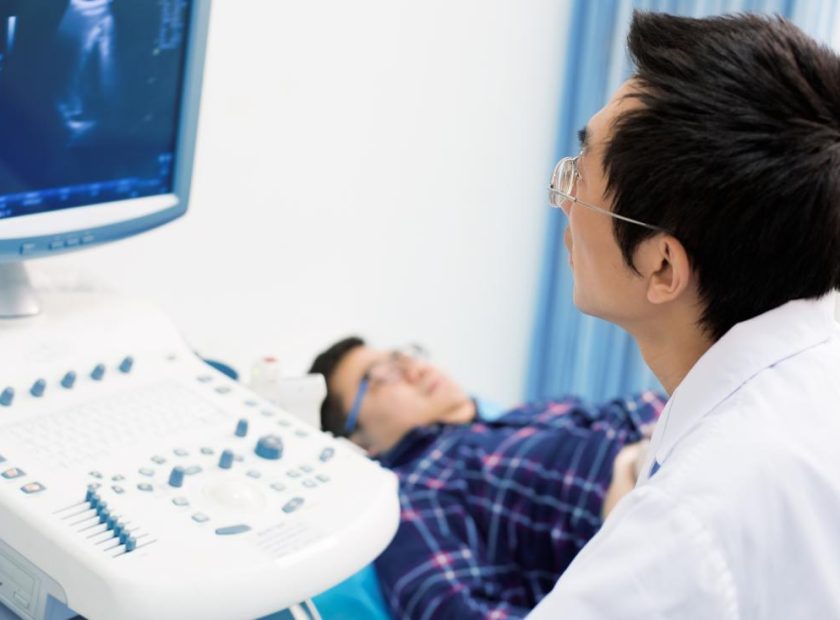Top 5 Frequently Asked Questions about Elbow Ultrasound Scans
Elbow pain and discomfort can be a troubling experience, hindering our ability to perform everyday tasks. To properly diagnose and treat such issues, medical professionals often turn to elbow ultrasound scans. In this article, we will delve into the most frequently asked questions about this diagnostic procedure, shedding light on its benefits, process, and relevance in the medical field.
- What is an Elbow Ultrasound Scan? An elbow ultrasound scan is a non-invasive diagnostic procedure that utilizes high-frequency sound waves to create detailed images of the elbow joint. It helps identify potential injuries, inflammation, or abnormalities within the soft tissues, muscles, tendons, ligaments, and bursae surrounding the elbow.
By generating real-time images, elbow ultrasound scans assist in the diagnosis of conditions such as tennis elbow, golfer’s elbow, bursitis, tendonitis, and arthritis. This procedure is safe, painless, and does not involve the use of ionizing radiation like X-rays.
- How Does Elbow Ultrasound Work? During an elbow ultrasound scan, a trained technician or radiologist applies a gel onto the skin surface around the elbow joint. This gel acts as a conductor, ensuring proper transmission of sound waves. Using a handheld device called a transducer, the technician then moves it across the targeted area, emitting sound waves that bounce back as echoes when they encounter different tissues.
These echoes are then converted into real-time images on a monitor, allowing the healthcare professional to assess the condition of the elbow joint and its surrounding structures. Elbow ultrasound scans provide invaluable insights into the internal structures and assist in diagnosing the root cause of the patient’s symptoms.
- What are the Benefits of Elbow Ultrasound Scans? Elbow ultrasound scans offer several benefits compared to other imaging techniques. Firstly, they are non-invasive and devoid of ionizing radiation, making them safe for patients of all ages. Moreover, ultrasound scans are painless, eliminating any discomfort associated with the procedure itself.
Another significant advantage of elbow ultrasound scans is their real-time imaging capability. This allows the radiologist or physician to visualize the dynamic movement of soft tissues in the elbow joint, providing valuable information about the condition and functionality of the structures examined.
Being a cost-effective diagnostic option, elbow ultrasound scans also enable medical professionals to promptly diagnose and initiate appropriate treatment plans, minimizing potential complications and facilitating faster recovery.
- How Is Elbow Ultrasound Scan Performed? Typically, an elbow ultrasound scan takes place in a radiology clinic or hospital. The procedure is relatively quick, usually lasting between 15 to 30 minutes. Before the scan, the patient may be asked to wear a gown and remove any jewelry or garments that obstruct the examination area.
Once prepared, the patient is positioned comfortably on an examination table, and the radiology technician applies the gel on the elbow area. The transducer is then moved across the skin surface, capturing images from various angles while the patient moves the elbow as instructed.
Throughout the procedure, the technician may provide guidance or ask the patient to adjust their position to obtain the best possible images. After the scan, the gel is wiped off, and the patient can resume their regular activities immediately.
- Are There any Risks or Precautions? Elbow ultrasound scans are generally considered safe, with no known risks or side effects associated with the procedure. Unlike X-rays or CT scans, ultrasound does not use ionizing radiation, making it a preferred choice, particularly for pregnant women and children.
However, it is important to consult with a healthcare professional before undergoing an elbow ultrasound scan to discuss any underlying conditions or potential contraindications. In some cases, patients with open wounds or infections near the elbow area may need to postpone the examination until the area heals.
Conclusion: Elbow ultrasound scans are valuable diagnostic tools that offer a safe, non-intrusive, and real-time assessment of elbow joint conditions. By providing detailed images of soft tissues and helping identify various injuries and disorders affecting the elbow, this procedure plays a crucial role in determining appropriate treatment strategies.





